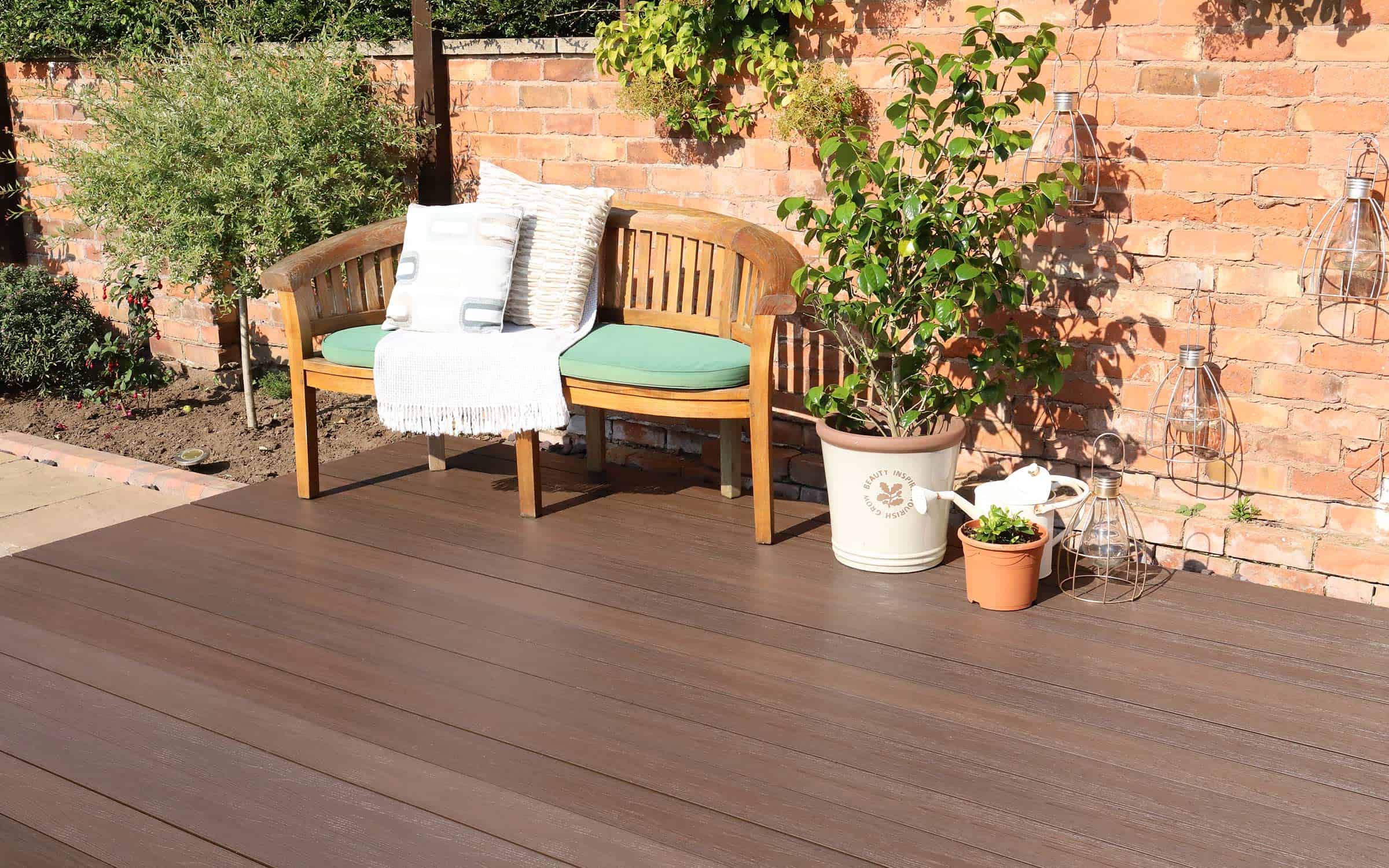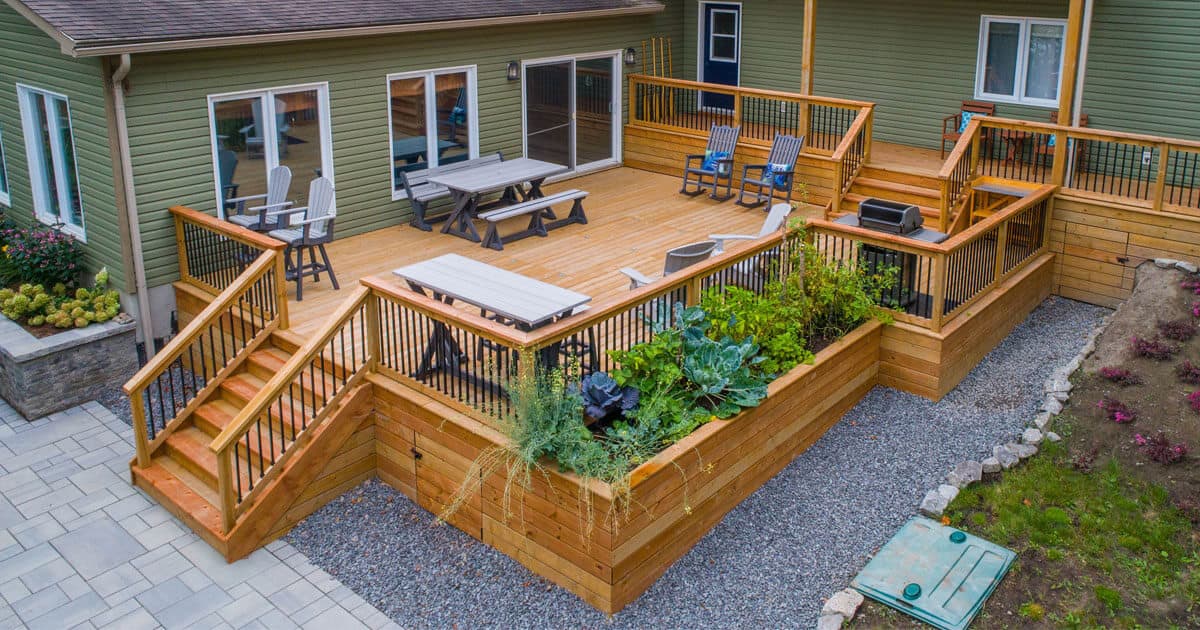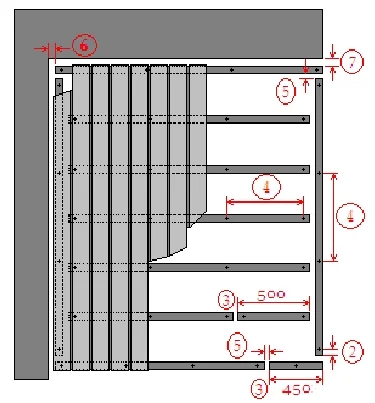
Creating a Safe Outdoor Environment: Slip-Resistant Decking Options
January 29, 2023
Deck Maintenance 101: Essential Tips for a Beautiful and Long-Lasting Deck
February 14, 2023WPC (Wood-Plastic Composite) decking has become a popular choice for creating beautiful and durable outdoor spaces. In this comprehensive guide, we will take you through everything you need to know about installing WPC decking, from the necessary tools and materials to post – installation care. By following these steps, you can ensure a flawless outdoor area that will last for years to come.
1. Introduction to WPC Decking and Its Benefits
WPC decking combines the natural beauty of wood with the durability and low – maintenance qualities of plastic. It is resistant to rot, decay, and insect damage, making it an ideal choice for outdoor use. Additionally, it comes in a variety of colors and textures, allowing you to customize your deck to match your aesthetic preferences. WPC decking is also environmentally friendly, as it often contains recycled materials.
2. Tools and Materials Needed for Installation
Before starting the installation process, it is important to gather all the necessary tools and materials. You will need a measuring tape, circular saw, drill, screws, hidden fasteners (if applicable), a level, and a chalk line. In terms of materials, of course, you need the WPC decking boards themselves, as well as any supporting joists or framing materials. Make sure to choose high – quality materials to ensure the longevity of your deck.
3. Preparing the Installation Area
The installation area needs to be properly prepared to ensure a smooth and successful installation. Clear the area of any debris, rocks, or plants. If you are building on an existing surface, make sure it is level and structurally sound. You may need to pour a concrete foundation or use adjustable pedestals depending on the situation. Mark the boundaries of your deck using a chalk line and ensure that there is proper drainage in the area.
4. Step – by – Step WPC Decking Installation Process
First, install the joists or framing according to your design plan, making sure they are level and spaced correctly. Then, start laying the WPC decking boards. If using hidden fasteners, follow the manufacturer’s instructions carefully. If using screws, drive them in straight and at an appropriate angle to avoid splitting the boards. Work row by row, ensuring that each board is properly aligned and spaced. Trim the boards as needed to fit the edges of the deck.
5. Post – Installation Care and Maintenance Tips
Once your WPC deck is installed, regular care and maintenance will keep it looking great. Sweep the deck regularly to remove dirt, leaves, and debris. You can use a mild detergent and water solution to clean it occasionally, but avoid using harsh chemicals. Check for any loose boards or fasteners and tighten or replace them as needed. Protect your deck from extreme weather conditions by covering it during harsh winters or using a UV – resistant sealer.
Installing WPC Decking: A Complete Guide
WPC (Wood – Plastic Composite) decking has emerged as a top choice for outdoor spaces, offering both beauty and durability. This guide will walk you through the entire process of installing WPC decking, including the tools required, area preparation, installation steps, and post – installation care. By following these instructions, you can create an outdoor area that is not only aesthetically pleasing but also long – lasting.
1. Introduction to WPC Decking and Its Benefits
WPC decking is a remarkable material that marries the natural allure of wood with the sturdiness and easy – maintenance features of plastic. One of its most significant advantages is its resistance to rot, decay, and insect infestation, which makes it perfect for outdoor applications. It also comes in a diverse range of colors and textures, enabling you to personalize your deck to suit your taste. Moreover, being environmentally friendly as it often incorporates recycled materials, it is a great choice for those who are conscious about the environment. Whether you’re looking to create a cozy patio or a large outdoor entertainment area, WPC decking can be an excellent option.
2. Tools and Materials Needed for Installation
Before embarking on the installation of your WPC deck, it is crucial to assemble all the necessary tools and materials. A measuring tape is essential for accurate measurements. A circular saw will be needed to cut the decking boards to the appropriate size. A drill is required for driving screws. Screws are a key component, along with hidden fasteners (if you choose to use them). A level is necessary to ensure that everything is even, and a chalk line helps in marking straight lines. Regarding materials, the WPC decking boards themselves are obviously required, as well as any supporting joists or framing materials. Selecting high – quality materials from the start is vital for the long – term durability of your deck.
3. Preparing the Installation Area
Proper preparation of the installation area is the foundation for a successful WPC deck installation. Begin by clearing the area of any debris, rocks, or plants. If you are building on an existing surface, it must be level and structurally sound. Depending on the situation, you may need to pour a concrete foundation or use adjustable pedestals. Use a chalk line to mark the boundaries of your deck clearly. Additionally, ensure that there is proper drainage in the area to prevent water from pooling on the deck, which could lead to damage over time.
4. Step – by – Step WPC Decking Installation Process
First, install the joists or framing as per your design plan. Make sure they are level and spaced correctly. This provides a stable base for the decking boards. Next, start laying the WPC decking boards. If you are using hidden fasteners, carefully follow the manufacturer’s instructions. If using screws, drive them in straight and at the right angle to prevent splitting the boards. Work row by row, taking care to align each board properly and maintain the correct spacing. Trim the boards as required to fit the edges of the deck neatly.
5. Post – Installation Care and Maintenance Tips
Once your WPC deck is installed, regular care and maintenance will keep it in excellent condition. Sweep the deck frequently to remove dirt, leaves, and other debris. Occasionally, you can clean it with a mild detergent and water solution, but avoid harsh chemicals as they may damage the deck. Check for any loose boards or fasteners and tighten or replace them as needed. To protect your deck from extreme weather, consider covering it during harsh winters or applying a UV – resistant sealer.
2. Tools and Materials Needed for Installation
When it comes to installing WPC decking, having the right tools and materials on hand is essential. Firstly, a measuring tape is a must – have. It allows for precise measurements during the installation process, ensuring that everything fits together as it should. A circular saw is also required. This tool is used to cut the WPC decking boards to the exact lengths needed for your deck design. Whether you need to trim the boards to fit the edges or make other custom cuts, the circular saw will get the job done.
A drill is another crucial tool. It is used to drive in screws, which are an important part of fastening the decking boards. Along with screws, hidden fasteners can be used (depending on your preference). If you choose to use hidden fasteners, make sure to follow the manufacturer’s instructions carefully when installing them. A level is necessary to guarantee that all components of the deck, from the joists to the decking boards, are even. This helps in creating a smooth and stable surface. A chalk line is also very useful. It enables you to mark straight lines, which is especially helpful when laying out the boundaries of the deck or aligning the boards in rows.
For materials, the WPC decking boards themselves are the main component. These boards come in various colors and textures, so you can select the ones that best match your outdoor aesthetic. In addition to the decking boards, you will need supporting joists or framing materials. These provide the underlying structure for the deck and are crucial for its long – term stability. It is important to choose high – quality materials for both the decking boards and the supporting structures. High – quality materials will not only ensure that your deck looks great but also that it can withstand the elements and last for many years.
3. Preparing the Installation Area
Preparing the installation area is a crucial step in the WPC decking installation process. Firstly, the area must be cleared of all debris, rocks, and plants. This creates a clean and unobstructed space for the deck. If you’re building on an existing surface, it has to be level and structurally sound. This is vital as an uneven or weak surface can lead to problems with the stability of the deck in the future.
In some cases, depending on the situation, you may need to pour a concrete foundation or use adjustable pedestals. A concrete foundation provides a solid base, especially for larger decks or in areas with softer ground. Adjustable pedestals, on the other hand, offer flexibility in leveling the deck, especially when dealing with slightly uneven surfaces.
Using a chalk line is a great way to mark the boundaries of your deck clearly. This not only helps in visualizing the size and shape of the deck but also ensures that the deck is installed within the desired area. Additionally, proper drainage in the area is essential. Water pooling on the deck can cause damage over time, such as warping or rotting. By ensuring good drainage, you can protect the integrity of your WPC deck and keep it in great condition for years to come.
4. Step – by – Step WPC Decking Installation Process
Begin the installation process by installing the joists or framing. This must be done according to your pre – planned design. It is of utmost importance to ensure that they are level and spaced accurately. The joists or framing serve as the fundamental base for the entire decking structure, and any inaccuracies here could lead to problems later on, such as an uneven deck surface.
Once the joists are in place, it’s time to start laying the WPC decking boards. If you’ve decided to use hidden fasteners, it is crucial to closely follow the manufacturer’s instructions. These instructions are designed to ensure that the fasteners are installed correctly, providing a secure hold for the decking boards without compromising their integrity. On the other hand, if you are using screws, drive them in straight and at the appropriate angle. This helps to prevent the boards from splitting, which could not only affect the appearance of the deck but also its structural integrity.
Work methodically, row by row. As you lay each board, pay close attention to proper alignment and spacing. This will result in a neat and professional – looking deck. If a board doesn’t fit perfectly along the edges, don’t worry. You can trim it as needed to ensure a seamless fit. Trimming the boards accurately is essential to achieve a clean and finished look for the perimeter of your deck.
5. Post – Installation Care and Maintenance Tips
After you’ve successfully installed your WPC deck, it’s important to keep up with regular care and maintenance to ensure it stays in top-notch condition. One of the simplest yet most effective maintenance tasks is sweeping the deck regularly. This helps to remove dirt, leaves, and other debris that can accumulate on the surface. By keeping the deck clean in this way, you not only maintain its appearance but also prevent potential damage that could be caused by debris scratching or staining the deck.
Occasionally, you may need to give your deck a more thorough cleaning. In such cases, a mild detergent and water solution can be used. However, it’s crucial to avoid using harsh chemicals. Harsh chemicals can strip away the protective layers on the WPC decking, leaving it vulnerable to damage from the elements. A gentle cleaning solution is sufficient to remove any built – up grime without causing harm.
Another important aspect of post – installation care is regularly checking for any loose boards or fasteners. Over time, with normal use and exposure to the elements, boards may become loose or fasteners may start to come undone. If you notice any such issues, it’s essential to tighten or replace them as needed. This helps to maintain the structural integrity of the deck and prevents any potential safety hazards.
Weather can also take a toll on your WPC deck. To protect it from extreme weather conditions, consider taking some preventive measures. For example, during harsh winters, covering the deck can shield it from heavy snow, ice, and freezing temperatures. Additionally, applying a UV – resistant sealer can help protect the deck from the sun’s harmful rays. This is especially important as prolonged exposure to UV rays can cause fading and degradation of the decking material.

